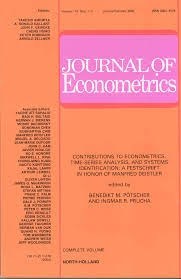
Kleibergen, F. (2009). Tests of risk premia in linear factor models Journal of Econometrics, 149(2):149--173.
-
Affiliated author
-
Publication year2009
-
JournalJournal of Econometrics
We show that statistical inference on the risk premia in linear factor models that is based on the Fama-MacBeth (FM) and generalized least squares (GLS) two-pass risk premia estimators is misleading when the β{\textquoteright}s are small and/or the number of assets is large. We propose novel statistics, that are based on the maximum likelihood estimator of Gibbons [Gibbons, M., 1982. Multivariate tests of financial models: A new approach. Journal of Financial Economics 10, 3-27], which remain trustworthy in these cases. The inadequacy of the FM and GLS two-pass t/Wald statistics is highlighted in a power and size comparison using quarterly portfolio returns from Lettau and Ludvigson [Lettau, M., Ludvigson, S., 2001. Resurrecting the (C)CAPM: A cross-sectional test when risk premia are time-varying. Journal of Political Economy 109, 1238-1287]. The power and size comparison shows that the FM and GLS two-pass t/Wald statistics can be severely size distorted. The 95% confidence sets for the risk premia in the above-cited work that result from the novel statistics differ substantially from those that result from the FM and GLS two-pass t-statistics. They show support for the human capital asset pricing model although the 95% confidence set for the risk premia on labor income growth is unbounded. The 95% confidence sets show no support for the (scaled) consumption asset pricing model, since the 95% confidence set of the risk premia on the scaled consumption growth consists of the whole real line, but do not reject it either. Keywords: Small β{\textquoteright}s; Size distortion of test statistics; Consumption capital asset pricing model